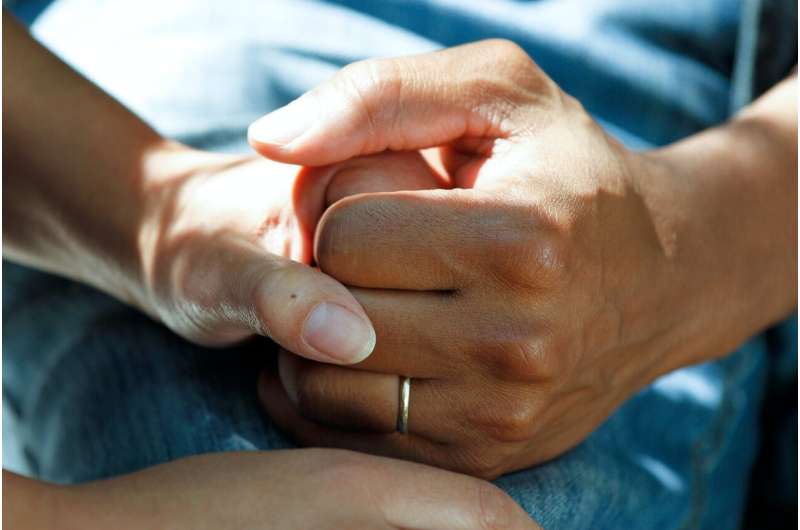Hypoxia in hospitalized COVID-19 patients may be treatable

COVID-19 patients with hypoxia respond positively to icatibant treatment, Radboud university medical center researchers wrote in JAMA Network Open. These findings have led to a follow-up study at ten Dutch hospitals into a drug that may be even more effective. The current study has been funded by ZonMw.
Rapid fluid overload of the lungs—pulmonary edema—is a hallmark of severe infection with SARS-CoV-2 (severe acute respiratory syndrome coronavirus 2). In a previous article, Nijmegen researchers suggested that this involves the ACE2 receptor. The coronavirus enters the cells via this receptor, after which it can multiply. However, the ACE2 receptor not only provides a gateway for the coronavirus, but it also keeps vasodilatory kinins under control. The infection causes most of the ACE2 receptors of the lung cells to dysfunction. Without ACE2, these kinins have free rein and—by binding to bradykinin receptors—can make the blood vessels leaky. Internist Frank van de Veerdonk, hospital pharmacist Roger Brüggemann and colleagues hypothesized that this process plays an important role in severe COVID-19 infection.
Patient study
After consultation with the Central Committee on Research Involving Human Subjects (CMO) and the Health Care and Youth Inspectorate (IGJ), and with the informed consent of the participating patients, the researchers tested their hypothesis with the drug icatibant. Van de Veerdonk comments, "This drug is used in patients with the rare condition: hereditary angioedema. These patients sometimes develop acute subcutaneous fluid deposits due to local leakage of blood vessels. Icatibant blocks the bradykinin receptor B2R, which quickly stops the leakage. To determine whether the drug is also suitable for the specific group of COVID-19 patients with fluid in their lungs, earlier this year we administered this drug to nine patients in the Internal Medicine Department and one patient in the Intensive Care Unit."
Hypoxia
The results of this study have now been published in JAMA Network Open. All the patients, which were in need for oxygen treatment due to fluid in their lungs, were given three doses of icatibant by subcutaneous injection at six-hour intervals. The patient in the ICU recovered sufficiently within 24 hours to be moved to the ward and was discharged after 7 days. Eight of the remaining nine patients needed less oxygen supplementation within 24 hours and the ninth after 38 hours. In 18 comparable patients who served as controls, substantially higher levels of oxygen supplementation were needed over time.
Support for the hypothesis
Brüggemann says, "Although this was not a randomized trial, the results support our hypothesis. In an early phase of the infection with severe oxygen deficit, we see that icatibant improves the situation. A disadvantage is the short-term effect of the drug. Half of the drug is broken down in two hours, so the effect diminishes quickly. After the treatment, three patients had to be given oxygen again because the drug had worn off."
Different drug
The research published in JAMA Network Open was actually a proof of concept, which the researchers have already built upon. Improved understanding of the role of the kinin-kallikrein system (KKS) in COVID-19 means that the researchers expect even better results from another drug. Brüggemann: "The drug lanadelumab remains active for much longer than icatibant, so you will probably only need to administer it only once or twice". Van de Veerdonk: "Lanadelumab also has a much broader effect. It inhibits the activation of the whole system that causes leakage of the blood vessels. It is therefore not only active for longer but might also be more effective."
Research in hospitals
Based on the initial results published in JAMA Network Open and these more recent insights, Van de Veerdonk and Brüggemann have been awarded a grant from ZonMw for a phase 2 clinical trial with lanadelumab for this specific group of COVID-19 patients. Several Dutch hospitals are participating in the study. If this approach works, Brüggemann and van de Veerdonk expect that the research can immediately be rolled out on a large scale internationally. This is not only important for rapid recovery of patients with hypoxia admitted to the hospital but can also reduce the pressure on IC capacity. Global organizations such as the World Health Organization (WHO) and REMAP-CAP are directly involved in this research, and the strategy is currently being considered by several others. With this strategy Van de Veerdonk and Brüggemann aim to help patients presenting with hypoxia to recover quickly and thus avoid ICU admission.
More information: Frank L. van de Veerdonk et al, Outcomes Associated With Use of a Kinin B2 Receptor Antagonist Among Patients With COVID-19, JAMA Network Open (2020). DOI: 10.1001/jamanetworkopen.2020.17708



















